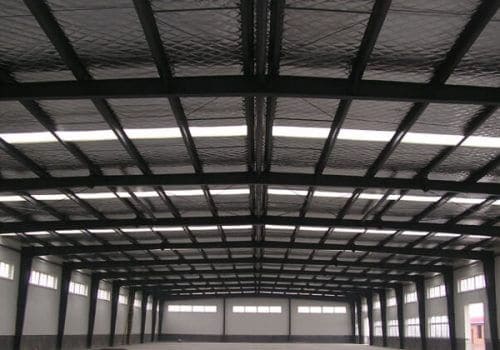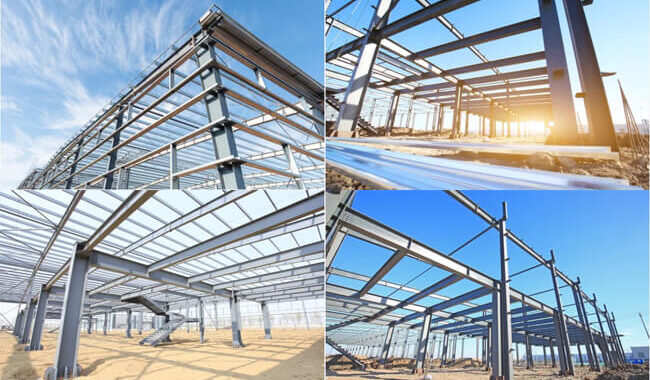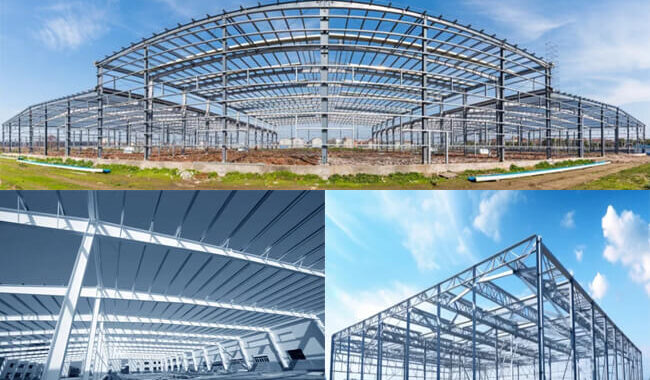From the first iron bridges of the Industrial Revolution to the soaring skyscrapers of today, steel has transformed how we…
Steel structure buildings have been widely used worldwide, and the quality of steel structure anticorrosion directly affects the safety and life of the entire steel structure building. Therefore, doing an excellent job in steel structure anticorrosion is a vital part of the whole building.
How to make steel structure anticorrosion
There are many anticorrosive coatings for steel structures, but they can be divided into primers, intermediate paints, and topcoats from their valuable functions. Primer is the basis of the entire coating system.
Steel structure anticorrosion must be able to wet the surface and have good adhesion to the structure. In addition, steel structure anticorrosion protects the system from environmental factors such as ultraviolet rays in the sun and provides resistance wear performance.

1. Basic treatment:
The basic treatment of steel structure anticorrosion is very important. With the same kind of anticorrosion coating and the same kind of corrosive environment, using shot blasting can extend the life of the paint film by three to five times compared with manual derusting. This is because the dirt and rust layer on the surface of the steel, especially the black oxide scale formed when rolling steel, is the cathode of electrochemical corrosion and the source of corruption, which must remove.
2. Primer treatment:
Primer is the foundation of the entire steel structure anticorrosion. It must have good adhesion to the base layer and can have a super protective function.
According to the material’s performance and experience, the anticorrosion primer of the steel structure was selected as the anticorrosion primer. The primer is composed of fine zinc powder and a small amount of film-forming base material. Zinc has higher electrochemical properties than steel. Therefore, when it is corroded, it has the effect of “self-sacrifice” to protect steel.
3. Intermediate paint treatment:
The intermediate paint for steel structure anticorrosion not only increases the thickness of the coating but also increases the thickness of the coating while improving the impermeability of the coating, so that the corrosive medium cannot or is difficult to reach the surface of the steel base layer, So that the steel structures are in a long-term protected state, increasing the durability and service life of the building. Epoxy glass flake coating is a leader in anticorrosion intermediate paint. The epoxy glass flake coating forms a unique shielding structure due to the extremely thin glass flakes arranged in multiple layers up and down in the coating.
4. Topcoat treatment:
The topcoat is usually resistant to salt spray, artificial aging, and humidity and heat. These functions are the reason to protect the entire anticorrosion system from failure. Although the primer and intermediate paint also have these functions, they are very limited. Once there is no protection from the topcoat, the intermediate paint and primer will quickly fail in a corrosive environment. Therefore, these functions are essential indicators for the coat.
Steel structure anticorrosion is essential for the surface treatment of steel structures. The first step of steel structure anticorrosion is to remove the rust layer and oil stains on the surface of the steel. Next, the black oxide scale remaining on the surface of steel should be removed and cleaned. Finally, the surface treatment quality must ensure that the steel components show metallic luster on the surface and refer to the corresponding steel surface pretreatment standards for details.
The attention for steel structure anticorrosion:
- The anticorrosion materials used for steel structure anticorrosion should be carried out according to the ratio of paint and supporting products provided in the product manual and cannot be added to less or more. Otherwise, it will cause paint film defects such as bottoming or cracking of the paint. It should be stirred evenly, filtered, and left for 15 minutes to defoam before painting.
- Do not add driers and other chemical additives at will because of personal opinions and other issues; otherwise, it will cause paint film defects such as cracking.
- The construction temperature of the outdoor steel structure anticorrosion should not be lower than 5 degrees Celsius, and the relative humidity should not be higher than 85%. The ambient temperature is below 0 ℃, and no painting work is allowed when snow or thin ice is on the components.
- It is forbidden for each layer to be dry poorly or to be constructed without standard sanding; otherwise, it will easily cause the phenomenon of bottom biting and falling off.
- In winter, the temperature is low, the surface of the paint has a long time to dry, and the surface of the paint film is in contact with the outside air for a relatively long time. As a result, the dust particles in the air are easy to adhere to the surface of the paint film, forming a particle phenomenon (more apparent when the air is dry). Therefore, to have a better paint film effect, please pay attention to the cleanliness of the environment before painting.
- It is strictly forbidden to apply the thick coating at one time; otherwise, it will cause defects of the paint film such as bottom biting, whitening, cracking, pinholes, and bubbles.
- After adjusting the paint, it should not be placed for too long. The longer the time, the more gloss will decrease.
- The viscosity of the paint changes with the temperature. When the temperature is low, the viscosity will increase a lot, which will increase the amount of thinner, and the gloss and fullness of the paint will decrease. During construction, the paint film should not be painted too thick at one time, so reduce the spray thickness, increase the number of spraying passes, and create a gradual drying environment from the outside to the inside.
Steel structure anticorrosion is related to whether the industry can produce, so scientific construction should ensure construction quality and personnel safety.














